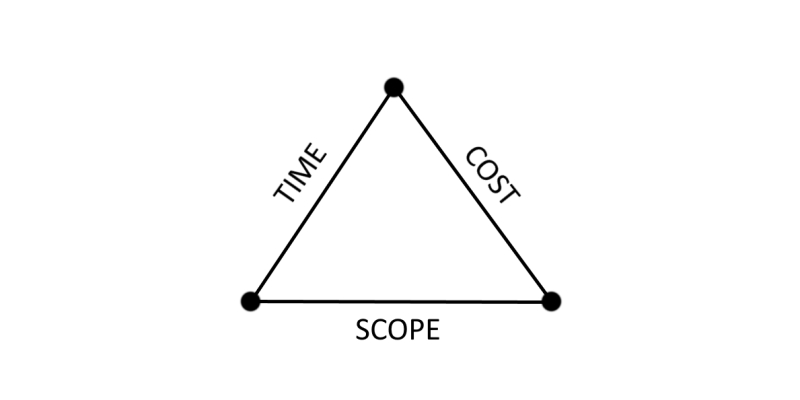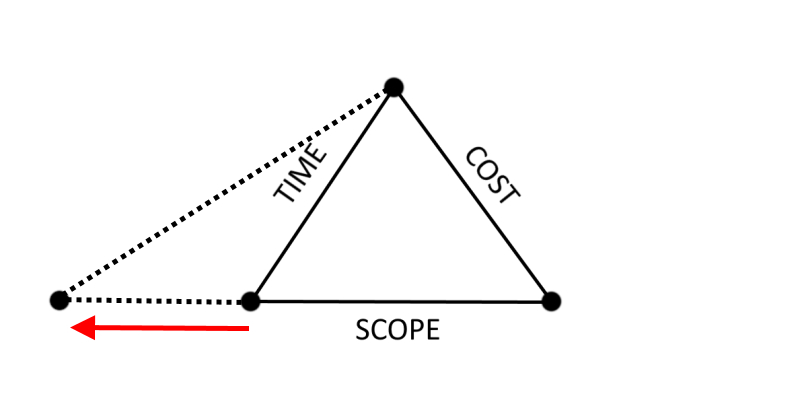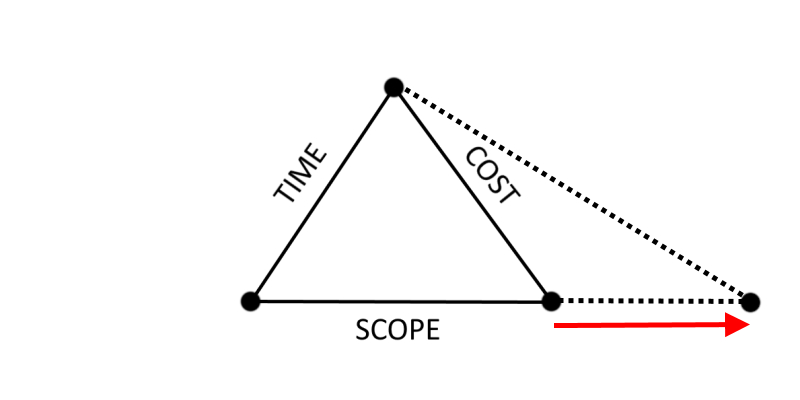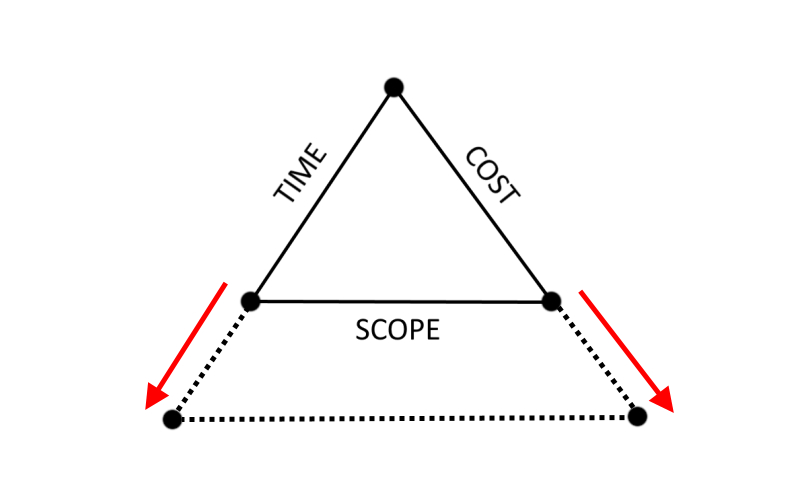The Triangle of Quality
How a project can be geometrically represented
Reading Time: 5 minutes
I have always been fascinated by the image of the triangle and its symbology. it is the geometric figure connected to the number three and all its universal meanings.
In the Pythagorean tradition the Triangle symbolizes the ascent from the multiple to the One. With this meaning of reaching a superior and complete state from single bases it is also used in my field of work and in Project Management.
How? … for the representation of a project.
Are you curious to know more? I invite you to read my article where I explain this analogy, its meaning and its usefulness during the decision-making process in the design of any product or service.
REPRESENTATION OF A PROJECT THROUGH A TRIANGLE
According to the Project Management Institute (PMI®), “a project is a temporary sustained effort to create a unique product or service. (if you want to know more: https://www.fabriziocesarini.com/project-management-does-it-serve-me-too/)
This effort is the result of three variables:
- Scope, i.e. what must be done and how;
- Time, the “timing” of realization;
- Cost, the set of necessary resources.
These three variables have an impact on the quality of the project, defining the limits within which it is possible to move during its implementation. Every change of each of them is consequently reflected on the others, thus generating a different quality level of the final project. For example, a lengthening of time generally causes an increase in costs, understood as the hourly cost of the resources committed.
If we want to represent this relationship between the final product and the three constraints, Scope, Time and Cost, the figure of the triangle is the one we need. In the technical jargon of Project Management it is called the Triangle of Constraints.

The quality of a project is the result of the three constraints and, therefore, of the decisions and consequent actions that must be taken with respect to time, cost and scope. Going back to the previous example, by increasing the project time and costs, the final quality will be favoured.
In the geometric representation of a project, quality is the very area of the triangle, therefore it influences all sides and in turn is influenced by variations on each side.
MANAGEMENT OF THE SIDES OF THE PROJECT TRIANGLE
One of the greatest skills of a Project Manager is flexibility, being able to decide and act on a daily basis between increasing internal difficulties and pressures imposed by surrounding factors. In order to achieve the ultimate goal, his or her scope for manoeuvre and intervention will therefore be that of the three aspects that influence the project, i.e. time, cost and scope. In other words, it must be able to give each of them priority over the others in terms of effectiveness and efficiency for the final success, while at the same time respecting the obligatory constraints imposed.
In the geometric representation this very delicate activity is translated into knowing how to manage the relationships between the three vertices of the triangle of constraints.
But let us see one at a time the meaning of the three sides of the triangle.
Time Constraint
Usually the TIME limit is the delivery date of the project. This aspect carries with it the concept of “urgency” and the consequences of non-delivery.
The most important aspect that we can associate with this side of time is the decreasing of the success or failure of the project itself. An example could be the opening of sports or artistic events which marks the end of the preparatory work or the failure of the project even worldwide.
Not respecting a date can also cause serious economic consequences, such as possible fines, as well as a missed opportunity to earn money.
Cost Constraint
The COST constraint is determined by the budget allocated to achieve the purpose of the project. This can be understood both as the monetary amount and the amount of human resources, materials, tools, etc. that can be used for the project.
Among the three sides of the project triangle, the cost is probably the primary one. In fact, it often happens that a project cannot start precisely because of a lack of necessary funds and/or adequate resources.
Scope Constraint
The last side of the triangle is the SCOPE, i.e. what should be done and what should not be done to make a project successful. it is the most vulnerable aspect during the design and execution of a project. In fact, in the early stages, the activities that will have to be put into practice are only outlined. it is in the course of work that its limits are made more precise and its limits are clearly established, thus giving guidelines to those who have to carry out the tasks of the project.
PROJECT MANAGER AT WORK
One of the competences of a Project Manager is to be able to assess the purpose of the project and the needs of the organisation and, therefore, to analyse all three constraints and establish the priority ones in terms of efficiency and effectiveness. In parallelism with the triangle this means finding which side must necessarily remain fixed and be able to act on the other two, always bearing in mind that the three variables are interdependent. In addition, it is the Project Manager’s responsibility to be able to intervene and adapt the project in the often recurring event that changes occur due to factors internal or external to the project.
Returning to the geometric representation of the triangle, these changes are represented in the variation of one or more sides of the triangle, which are lengthened or shortened according to the change with the consequent change in the final quality. The following images show the changes in the design in terms of variation of the sides of the triangle that represents it.
1st case: variation of Scope
In this case the possible consequences may be an increase in time, if the cost side has to remain fixed, or an increase in costs, in terms of available resources, if time has to remain fixed.


2nd case: change in costs and times
A proportional increase in cost and time affects the scope and quality of the final project.

CONCLUSION
Through the analogy of the triangle is immediate understanding of the dynamics that happens during the decision-making process that leads to the realization of any project, be it a product, a service or an event. Managing the triple constraint of a project is like modifying the figure of the triangle that represents it, where the final area represents the level of quality obtained.
Each side represents a fundamental pillar for the achievement of its success. Each has its own limits and priorities. The task of the Project Manager must therefore be:
- Identify which sides are to be kept fixed
- Evaluate the consequences on the remaining sides
- Estimate the effects on the quality of the project
What do you think of this geometric analysis of Project Management?
